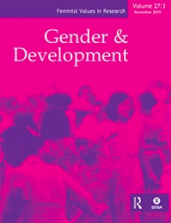Do women’s rights organisations need ‘femocrats’? The negotiation of the Peruvian–Spanish agreement for development co-operation 2013–2016

Overview
In 2005, the Organisation for Economic Co-operation and Development (OECD) approved the aid effectiveness principles for improving the impact of Official Development Assistance (ODA). Donor countries such as Spain understood this agenda as an opportunity to promote gender equality in their development co-operation policy. However, gender equality almost disappeared as a priority in most of the bilateral agreements after 2005. This puzzling outcome leads me to ask how the implementation of the Paris principles made gender equality less of a priority, and how the feminist movement can ensure that gender equality and women’s rights are at the centre of this agenda. To answer these questions, I examine the negotiation process of the Peruvian–Spanish Strategic Framework 2013–2016. This case shows how exclusionary informal mechanisms may leave women’s rights organisations out of negotiation processes. I argue that connections of feminist and women’s movements with ‘femocrats’ and gender critical actors inside state machineries are crucial to defend gender equality as a priority sector. This is particularly relevant in the post-COVID-19 scenario and the global goal of ‘building back better’ with a gender lens. Without the participation of gender justice advocates in aid negotiation processes, it becomes more difficult to prioritise gender equality in bilateral co-operation agreements and, consequently, to allocate funds for women’s rights organisations.
Additional details
Author(s)
How to cite this resource
Citation styles vary so we recommend you check what is appropriate for your context. You may choose to cite Oxfam resources as follows:
Author(s)/Editor(s). (Year of publication). Title and sub-title. Place of publication: name of publisher. DOI (where available). URL
Our FAQs page has some examples of this approach.
Effectiveness Review: Rights in Crisis Campaign Afghanistan



